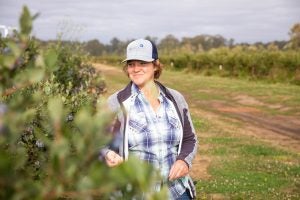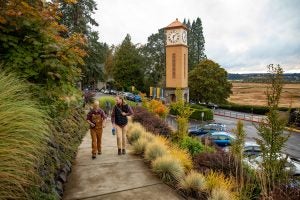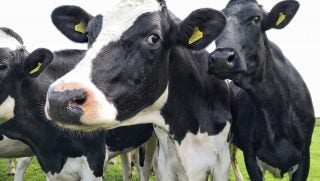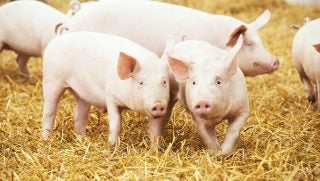Originally starting in 1935 as a small Bible institute, Corban University in Salem, Oregon, has grown into a diverse teaching facility that equips Christian students to help solve our world’s problems on multiple fronts, including our food supply.
Three years ago, we started our Ag Business curriculum — a business degree with an ag business concentration — and have had at least 16 students every year. But we realized we needed to broaden and deepen that focus, so we’re readying for our first Ag Science class in fall 2022. We’re seeing far more global-savvy students now who want to help save the planet and reduce pollution and carbon footprints. They’re going into more environmental, agricultural and biological sciences, so Corban’s new Ag Science focus — the only Christian program of its kind in the Pacific Northwest — will be more focused around a sustainability approach versus strictly commercial or industrial.
Education and agriculture are similar in that you plant something today in hopes you’ll get a great yield somewhere down the road, but you need both foresight and patience to envision what could grow.
As we plan Corban’s Ag Science curricula, we want to maximize the technologies that allow us to better conserve and measure our impacts. For example, irrigation soil monitors are so dialed in that they can apply water as needed instead of watering on a set schedule; that kind of technology has developed so much more even in the past two years, with greater successes in both conserving water and preventing leaching and contamination.

And while the notion of looking at soil as a living microorganism isn’t new, it’s becoming more critical. Soil is a living environment, so we have to look at the whole as well as the parts and adjust our efforts to keep it all healthy. As Ag Science matures, we’ll need to pay more attention to combining all the parts into the bigger picture; then, when our students go back to their farms, or ag service companies, or even into a mission field somewhere with depleted and abandoned ground, they’ll have the knowledge and tools to be able to complement the soil as a living system and boost sustainability.
We want to train them on both regenerative agriculture and sustainable agriculture.
Corban also is asking what we and other universities can do to improve our own campuses. When you have a large amount of landscaping, as many college campuses do, you can also have a lot of water requirements and a lot of potential waste. We want our students to look at what they can do to be sustainable right here in their backyard. For example, Corban is built on a hill, so our landscapers have learned how to maximize water runoff and our next step should be water conservation and reuse.
We should also consider new construction that recycles gray water for landscaping, employs natural soil filtration through permeable sidewalks and parking areas, and utilizes plant filtration to filter runoff carrying fertilizers and pollutants. Even something as simple as turning off the water between scrubbing and rinsing hands or while brushing teeth can save over six gallons per person per day — a huge savings when considering the number of students living on campus.

Another exciting angle is gleaning expertise from surrounding farms that are currently implementing new technologies. We have such a great community out here; our local farmers are saying, “Yes, bring the students here to see what we’re doing!”
We’re seeing things like drones and data analytics as the way of the future: Capturing and analyzing data to best inform pest impact, plant health, or water needs — there are just so many insights drones can capture, and I’m currently writing curriculum for a crop science class to incorporate this technology further.
We’re taking the best of what’s offered today and envisioning a future with more efficiency and less waste. A good example is harvesting: Labor is expensive, but not as expensive as letting crops rot on the vine. With labor shortages, if we can’t handpick certain crops, how can we do it mechanically, even if it’s not our first choice? For something like berries, mechanical picking isn’t the best way to do things, but newer harvesters have been innovated to be more gentle and able to gauge how much drop and air cushioning are necessary to prevent bruising. In this way, efficiencies and improvements keep us all moving forward.
Probably the hardest thing we’re finding now is that our classes can go in so many different and exciting directions. We’re interested in animal sciences — talking through technical advances and better ways to raise them — and we’re excited to work more with soil health, looking at micro-elements and what can be beneficial for different crops and soil types. And we wonder: What kind of ag research will Corban be doing, and how can we best serve our students?
Ultimately our soil health ties into crop science which ties into animal and food sciences which all tie into harvesting, transport, packaging and shelf life. The big picture of tomorrow’s Ag Science is very interrelated and multifaceted. Corban doesn’t have huge horticulture or soil science departments, so we’re designing our curriculum literally and figuratively from the ground up. But we’re focused on technology and sustainability and equipping our students to solve for both age-old problems and ones that haven’t even surfaced yet … and it’s an exciting place to be.
Susie Nelson, PhD, is the Assistant Professor and Director of Agriculture Science at Corban University. Having been around agriculture her entire life, she has managed her family farm for the past several decades and appreciates teaching and shaping the next-gen of farmers from a biblical worldview.



